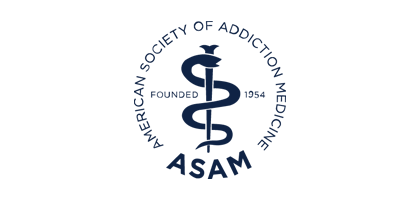Blog
The Comprehensive Addiction and Recovery Act - Highlights for Members
On July 13, 2016, the Senate passed the Comprehensive Addiction and Recovery Act (CARA), which was passed by the House on July 8. The bill now heads to the President’s desk for his signature.
CARA is a sweeping bill that came together over the course of several years with input from hundreds of addiction advocates. Its provisions address the full continuum of care from primary prevention to recovery support, including significant changes to expand access to addiction treatment services and overdose reversal medications. It also includes criminal justice and law enforcement-related provisions.
Among all the federal programs created, modified or reauthorized, some are of particular interest to addiction specialists. Here are the highlights.
Section 107. Improving Access to Overdose Treatment: This section authorizes the Secretary of the Department of Health and Human Services (HHS) to award grants of up to $200,000 per year to federally qualified health centers (FQHCs), opioid treatment programs (OTPs), or any practitioner waivered to prescribe buprenorphine to establish a naloxone co-prescription program, train health care providers on naloxone co-prescribing, purchase naloxone, offset co-payments for naloxone, or establish protocols to connect patients who have experienced an overdose with appropriate treatment.
Section 110. Opioid Overdose Reversal Medication Access and Education Grant Programs: This section authorizes the HHS Secretary to make grants to states to implement strategies for pharmacists to dispense naloxone pursuant to a standing order and to develop naloxone training materials for the public.
Section 301. Evidence-based Prescription Opioid and Heroin Treatment and Interventions Demonstration: This section authorizes the HHS Secretary to award grants to state substance abuse agencies, local governments, or nonprofit organizations in areas with high rates of or rapid increases in heroin or other opioid use to expand the availability of medication-assisted treatment. It authorizes $25 million for each fiscal year between 2017 and 2021.
Section 303. Medication-Assisted Treatment for Recovery from Addiction: This section makes several changes to the law regarding office-based opioid addiction treatment with buprenorphine. Specifically, it:
- Expands prescribing privileges to nurse practitioners (NPs) and physician assistants (PAs) for five years (until October 1, 2021). NPs and PAs must complete 24 hours of training to be eligible for a waiver to prescribe and must by supervised by or work in collaboration with a qualifying physician if required by state law. The HHS Secretary has 18 months to issue updated regulations governing office-based opioid addiction treatment to include NPs and PAs.
- Nurse practice laws and regulations are specific to each state. The American Association of Nurse Practitioners (AANP) has created an interactive map to provide licensure and regulatory requirements, as well as practice environment details, for all 50 states and the U.S. Territories. AANP also has a list of state practice laws and regulations categorized by type.
- Gives the HHS Secretary the authority to exclude from the patient limit those patients to whom medications are directly administered.
- Directs the HHS Secretary to review the provision of opioid addiction treatment services in the U.S. and submit a report to Congress, including an assessment of whether there is need to change the patient limit, every three years.
- Allows states to lower the patient limit and allows states to require practitioners to comply with additional practice setting, education or reporting requirements. States may not lower the patient limit below 30.
Section 501. Improving Treatment for Pregnant and Postpartum Women: This section reauthorizes a grant program for residential opioid addiction treatment of pregnant and postpartum women and their children and creates a pilot program for state substance abuse agencies to address identified gaps in the continuum of care, including non-residential treatment services.
Section 601. State Demonstration Grants for Comprehensive Opioid Abuse Response: This section authorizes the HHS Secretary to award grants to states to establish a response plan to the opioid epidemic. The plan may include:
- Education efforts related to opioid use, treatment and addiction recovery, including education of medical students, residents, physicians and other controlled substances prescribers
- Establishing, maintaining or improving a prescription drug monitoring program (PDMP)
- Expanding the availability of prescription opioid addiction treatment
- Developing, implementing and expanding efforts to prevent opioid overdose deaths
- Advancing education and awareness of the public regarding the dangers of opioid misuse, safe medication disposal and detection of early signs of opioid addiction
A full copy of the Conference Report to accompany CARA (S. 524) available here, the Joint Explanatory Statement is available here, and an official summary is available here.
Email questions to advocacy@asam.org.

